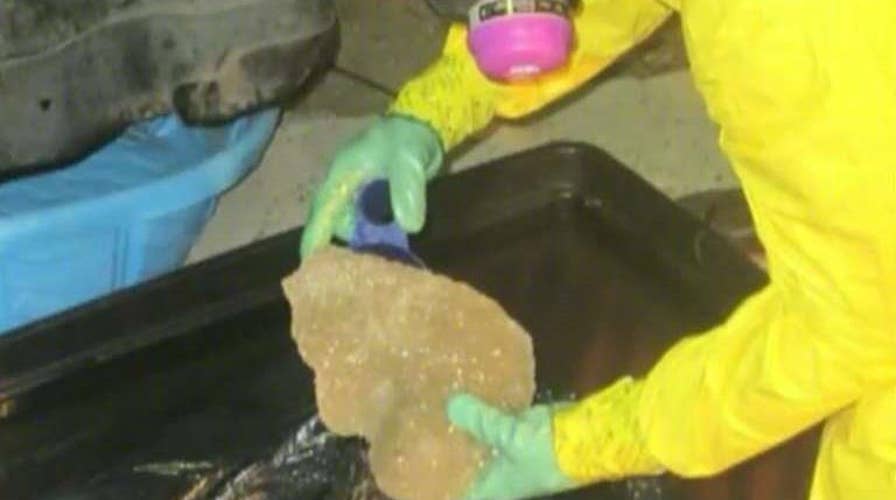Illegal immigration down, drug smuggling up at the border
Sources say the U.S. seizes less than 50 percent of illegal narcotics crossing the border; national correspondent William La Jeunesse reports from Los Angeles
Like any large corporation that responds to a sagging line of revenue, the Mexican cartels who control the border have replaced a decline in human smuggling with an increase in drug smuggling.
"They need to make their profits somewhere," says Border Patrol Agent Marlene Castro, overlooking the Rio Grande in South Texas. "They were making so much money from human trafficking. Now that's at a near all-time low, so they're trying to make money on narcotics...marijuana, meth and cocaine."
While the trend is border-wide, it is more pronounced in the Rio Grande Valley of Texas than most sectors. The smuggling of Central American families fell from roughly 15,000 a month before Trump’s election to less than 1,000 today. At the same time, seizures of heroin since January are up 177 percent, cocaine 129 percent and methamphetamine up 150 percent, according Border Patrol figures.
"We have seen narcotics come in disguised as carrots, mangos, limes, watermelons. They will take advantage of whatever is there," says Frank Longoria, Field Operations Assistant Director for U.S. Customs & Border Protection in Laredo. "They will smuggle in gas tanks, then shift to milk containers, shampoo bottles. They adjust, we adjust."
For the most part, marijuana still moves between the ports of entry, most typically in trucks or backpacks hauled by illegal immigrants who do it to help pay their smuggling fee. By contrast, 81 percent of high-value narcotics like heroin, meth and cocaine move through the ports of entry.
To stop that, Customs and Border Protection uses dogs and scanners to find the drugs hidden in tires, and freshly welded traps under the chassis of vehicles and trucks passing through. Last week, officers at the Hidalgo International Bridge intercepted a load of liquid methamphetamine valued at $3.8 million hidden in the gas tank of 2008 Chevy Silverado.
Two days prior, Border Patrol agents stopped a Ford F-150 pickup with 200 pounds of meth valued at $8 million at a checkpoint less than 30 miles away.
Because of the money involved, Chief Patrol agent Raul Ortiz says, “We have seen an increase in assaults on agents across the border.”
While the president's budget proposal does add more manpower and infrastructure, the cartels have also upped their game, replacing radios with encrypted phones and trucks with drug delivery drones. On one hand, existing barriers have forced the smugglers to funnel their narcotics through the checkpoints, but they've resorted to tunnels and even catapults to send narcotics over the border.
"They're looking for revenue and right now they don't have the (illegal) immigrants, so they're looking for other ways to make money," says Columbia University professor Christopher Sabatini. "Again there is a problem on the U.S. side that there's a demand for these drugs and we have to recognize that."
U.S. drug users drive demand. Mexico provides more than 90 percent of the illegal drugs entering the U.S., including the synthetic heroin that is helping kill more than 100 users a day by overdose. The drug, known as fentanyl and its super potent cousin fentanyl-C, are manufactured in Mexico's Golden Triangle, less than 300 miles from the Texas border.
Sources tell Fox News the U.S. is stopping less than 50 percent of all illicit drugs crossing the Southwest border.


